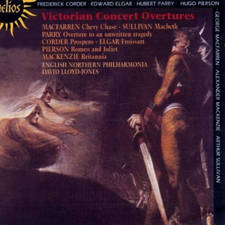The Full Works Concert - Friday 21 March 2014
Jane Jones spans the centuries with music from Haydn, Beethoven, Gershwin, Stravinsky and Barber.
This evening's concert opens with music by George Gershwin. He first visited Paris soon after the premiere of his Rhapsody in Blue in 1924. Two years later, he went to the city again and the idea came to him of composing an orchestral work describing his impressions of the city. He even bought some authentic Parisian taxi horns, after deciding to use the real thing. It was another two years after that, though, before he got round to serious work on the piece. Back in Paris in 1928, he had meetings with Ravel, Stravinsky, Prokofiev, Poulenc and Milhaud - and bought more taxi horns. Gershwin described An American in Paris as a 'rhapsodic ballet…written very freely and...the most modern music I've yet attempted.'
Haydn's Symphony No. 104 in D major is the composer's final symphony, the last of the twelve so-called London Symphonies, and is known particularly as the London Symphony. It was composed by Haydn while he was living in the city in 1795, and premiered at the King’s Theatre on 4 May in a concert he conducted of his own compositions. The premiere was a great success; Haydn wrote, 'The whole company was thoroughly pleased and so was I. I made 4000 gulden on this evening: such a thing is possible only in England.'
Domenico Cimarosa was an Italian opera composer, who wrote more than eighty stage works during his lifetime, including his masterpiece, Il matrimonio segreto (1792). Tonight we hear his Oboe Concerto in Bb major played by Christoph Hartmann who directs Ensemble Berlin from the oboe.
Given the great success of the Adagio for Strings, Samuel Barber (pictured) could have been forgiven for resting on his musical laurels in the late 1930s. But the American composer was having none of it: he set about working on his only Violin Concerto in 1939, just a year after the Adagio’s premiere. Initially, the composer’s reasons for cracking on with a new work were primarily financial: he’d been commissioned to write a violin concerto by one Samuel Fels, father to one of Barber’s classmates at the Curtis Institute of Music and a Philadelphia industrialist. Fels was a wealthy man, but a seemingly demanding one, too. Far from letting Barber compose at a distance, Fels, it’s said, gave continued feedback on what he did and didn’t like. At first, the work was too simplistic. Barber’s solution? Add a fiendishly challenging finale. Fels’s response? It had become too complex. Back and forth they went, the composer duly making changes against his wishes – presumably because he knew that a worthwhile pay cheque awaited him at the end of his endeavours.
The classical era was very much in Stravinsky's mind when he was composing his ballet, Pulcinella. The great Russian impresario Diaghilev wanted a ballet based on an early 18th-century Commedia dell'arte libretto and music believed to have been composed by Giovanni Pergolesi. Stravinsky rewrote this older music in a more modern way by borrowing specific themes and textures, but interjecting modern rhythms, cadences and harmonies.
George Gershwin: An American in Paris
Zubin Mehta conducts New York Philharmonic Orchestra
Domenico Cimarosa: Oboe Concerto in Bb major
Christoph Hartmann directs Ensemble Berlin from the oboe
Joseph Haydn: Symphony No.104 in D major
Howard Shelley conducts Orchestra of Italian Switzerland
Samuel Barber: Violin Concerto Opus 14
Violin: Vadim Gluzman
John Neschling conducts Sao Paulo Symphony Orchestra
Igor Stravinsky: Pulcinella Suite
Christopher Hogwood conducts Basel Chamber Orchestra











